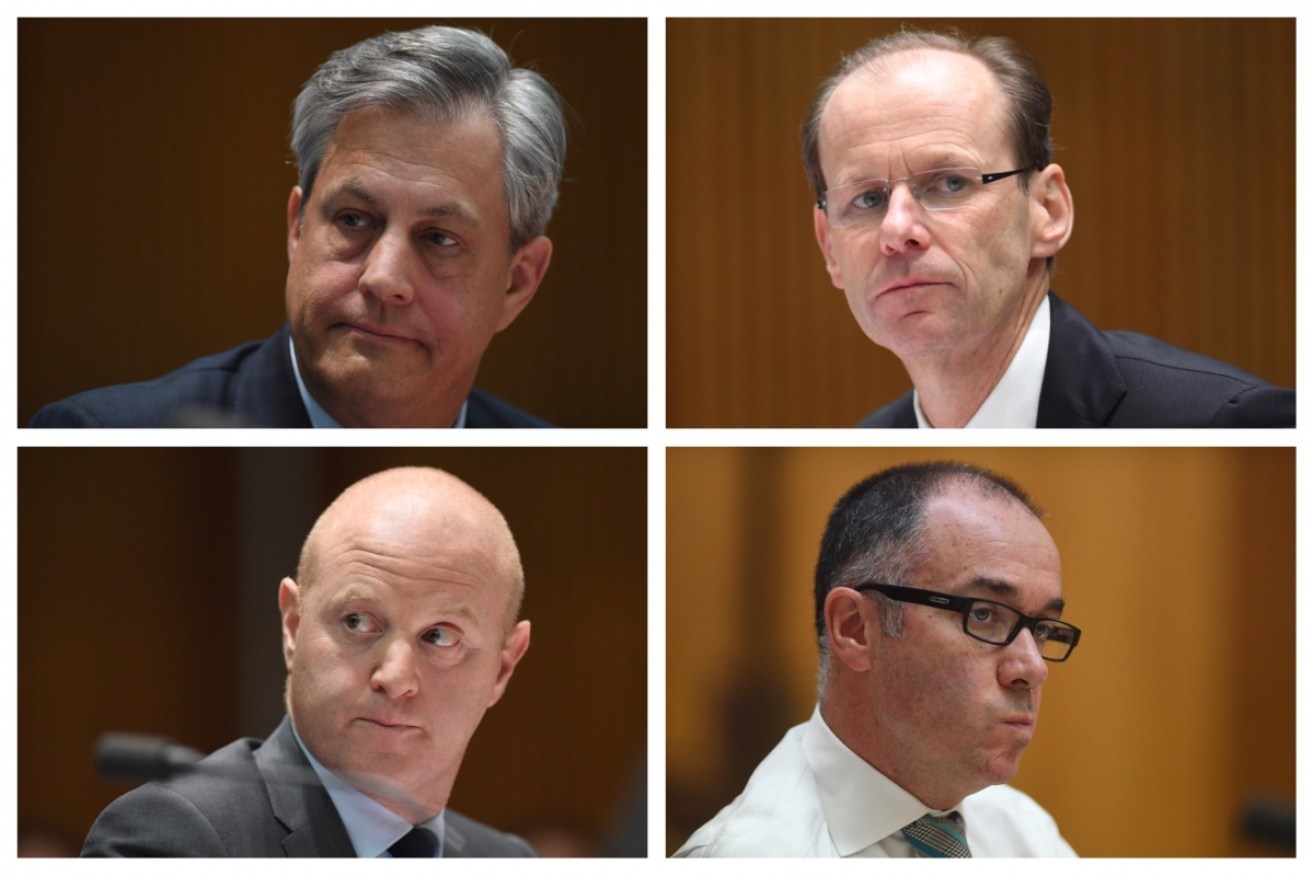Almost every single CEO of an ASX 200 company is a man


White, male CEOs: Westpac's Brian Hartzer, ANZ's Shayne Elliott, CBA's Ian Narev and NAB's Andrew Thorburn.
Young Australians with ambitions to be the CEO of a major Aussie company have a clear route to success: be born a man, change your name to Andrew, and move to Sydney.
Those are some of the standout findings of a new report by recruitment firm Robert Half, which profiles the chief executive officers of Australia’s 200 biggest publicly-traded companies.
The ‘CEO Tracker’ report found a staggering 94 per cent of ASX 200 CEOs were men. Or, to put it another way, of the 200 CEOs, just 12 were women.
Almost half (47 per cent) were based in Sydney, making the harbour city the unequivocal capital of big business, comprehensively thumping nearest rival Melbourne, which was home to just 27 per cent of CEOs.
Exactly half of the CEOs surveyed had a background in finance, and almost 60 per cent had worked internationally.
And in an absurd twist, the survey found 7 per cent of ASX 200 CEOs were called Andrew – meaning there are more CEOs called Andrew than there are female CEOs.
Turning to pay, the study found that 85 per cent of ASX 200 CEOs earned more than $1 million a year, while 35 per cent earned more than $3 million a year – almost 40 times the average salary.
One of the less predictable findings regarded education. While most Australian CEOs had been to university, a not-inconsiderable number – 18 per cent – did not hold an undergraduate degree.
Also surprisingly, just over half held post-graduate degrees, suggesting enrolling in an MBA is far from being a sure route to executive success.
In fact, only 22 per cent of the CEOs held MBAs. Masters of science and applied finance were also popular postgraduate degrees, as was a degree from the Harvard Advancement Management Program.
It also turns out CEOs are by-and-large company men and (occasionally) women. Sixty-two per cent of those surveyed were already working at the firm when they were made CEO, on average taking eight years to work their way to the top job.
Just 33 per cent were headhunted from other companies.
International experience appears to significantly boost your chances of becoming a CEO – especially in Asia, the most popular work destination for those destined to be CEOs.
Europe and North America also rated highly, while Africa, the Middle East and Latin America did not.

Former Westpac CEO Gail Kelly could be an example of the ‘one and done’ phenomenon.
Why women are so underrepresented at the top
Isabel Metz, a professor of organisational behaviour at Melbourne University and an expert in gender discrimination in senior management, said she was not surprised by the figures.
“The proportion of male to female CEOs has been pretty stable for years, despite all the efforts to increase diversity in leadership positions in Australia,” she said.
She said that in most cases, once one woman had held a particular role in a particular company, that tended to break the cycle, and more women would generally follow.
But she said, for some reason, this did not seem to apply at the very top echelons of management.
One of the possible explanations for this, she said, was a phenomenon known as ‘one and done’.
“Once a woman has held the role, the company feel they have demonstrated that they don’t discriminate, and are therefore a good employer for women,” Professor Metz said.
This, she said, led to complacence, which in turn led to the return of old biases.
But she added: “If this was easy, we would have done it a long time ago.”
Professor Michelle Brown, a management and marketing expert at Melbourne University, had more bad news for those women who did beat the odds and make it to a senior management role.
“The gender pay gap gets larger as women move into higher-level jobs in organisations,” she told The New Daily.
Professor Brown pointed to analysis by the Workplace Gender Equality Agency that showed, while the overall gender pay gap for total pay was 23.9 per cent, for senior management personnel it was 28.8 per cent – five percentage points higher.








